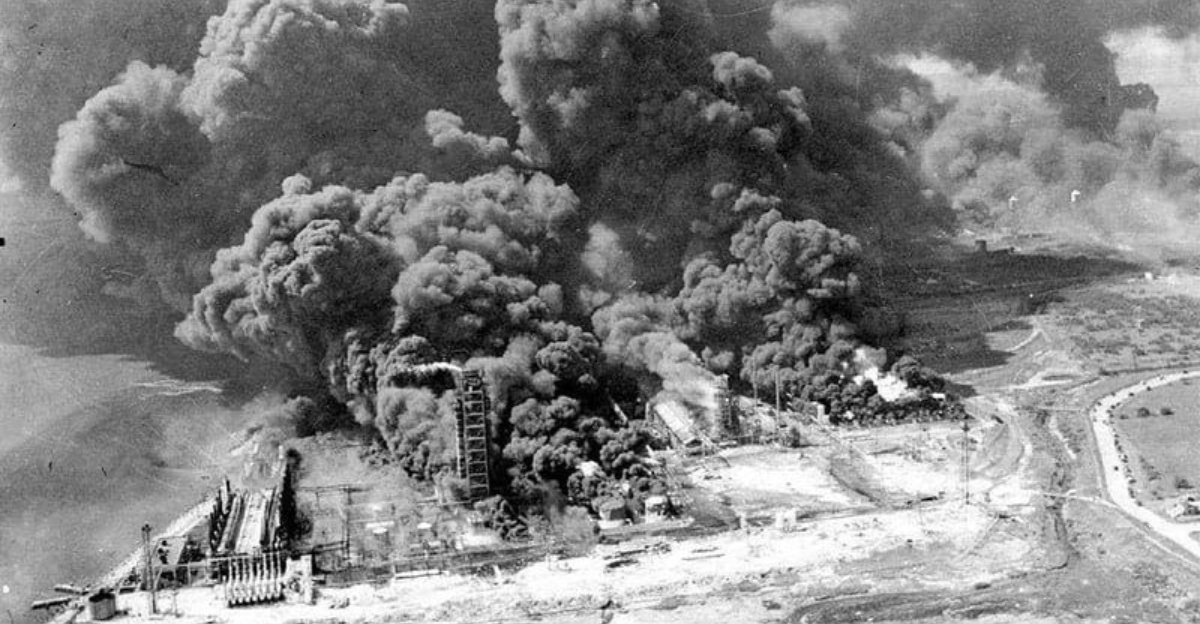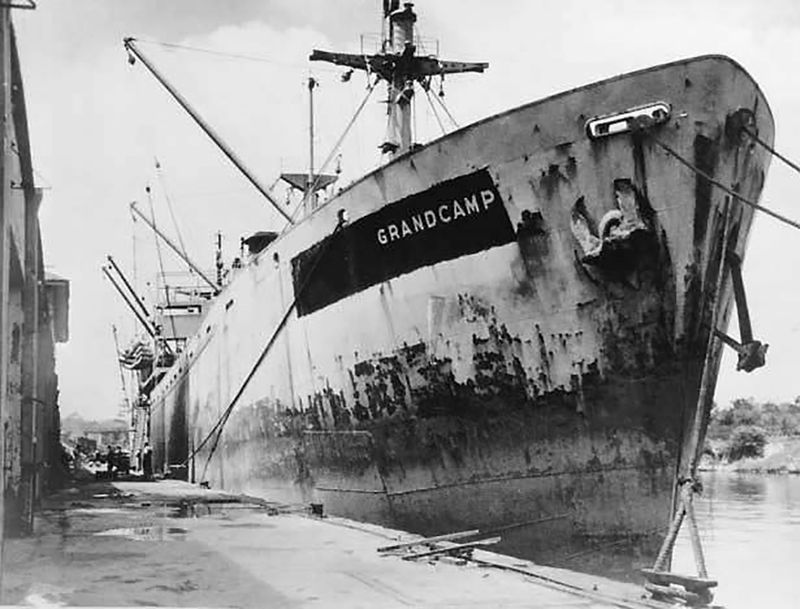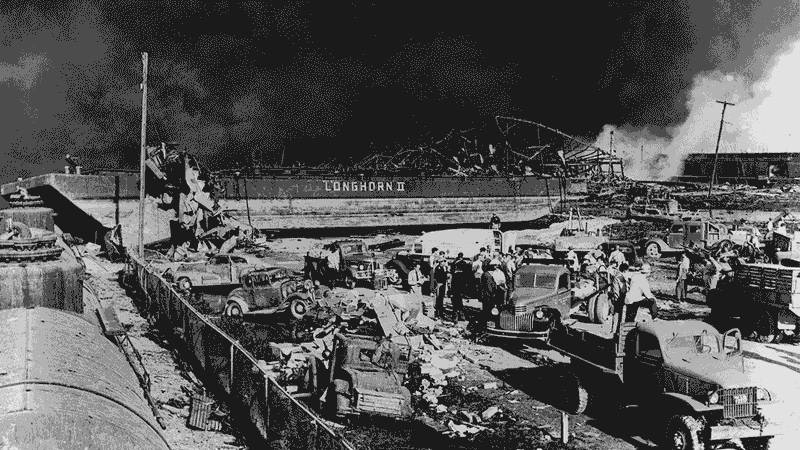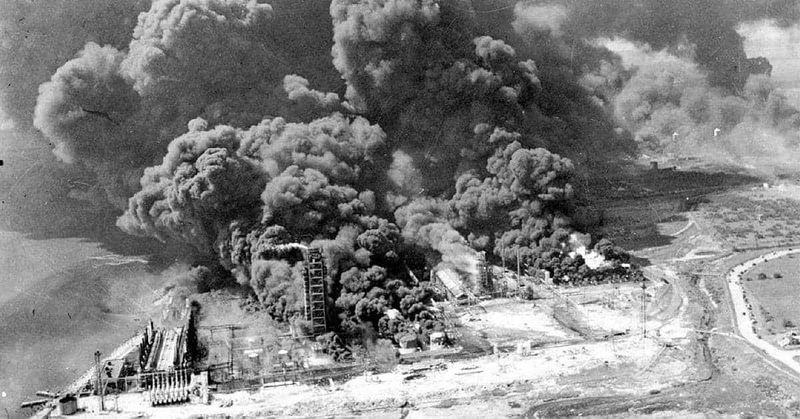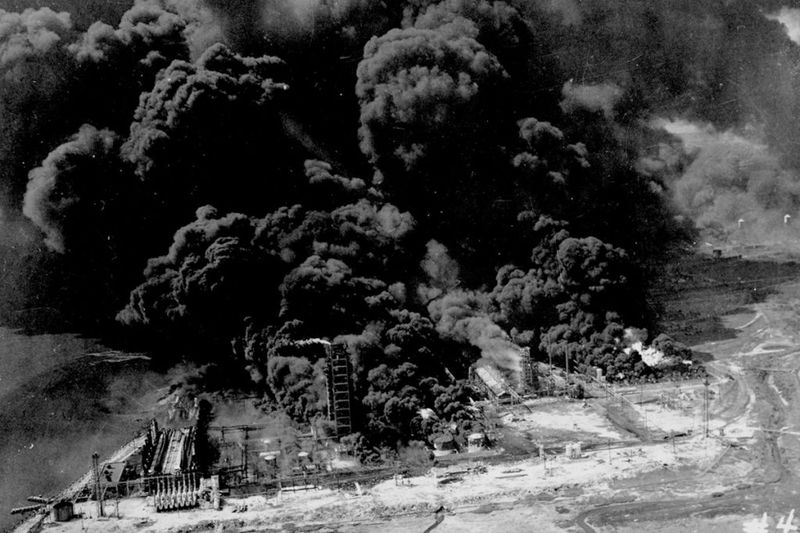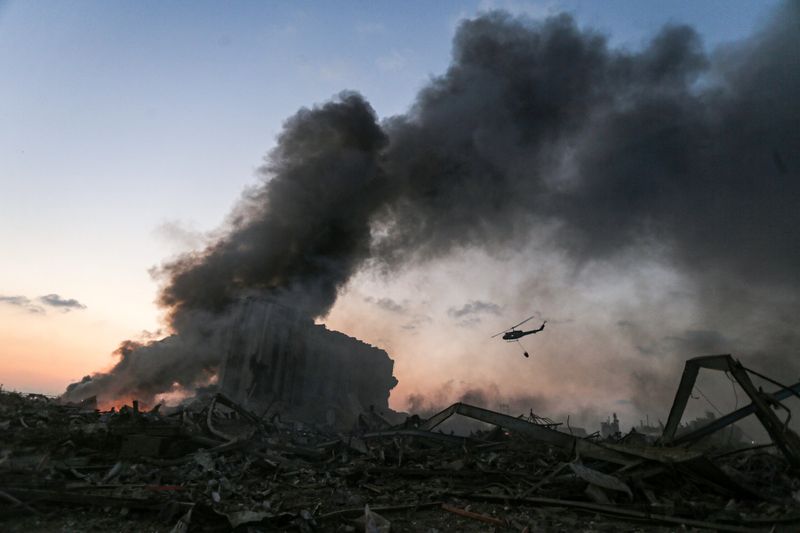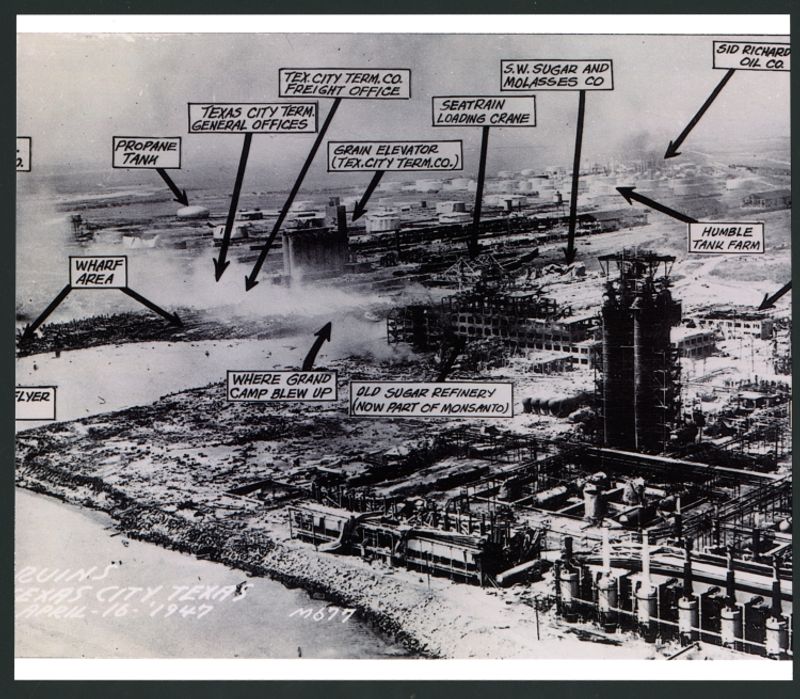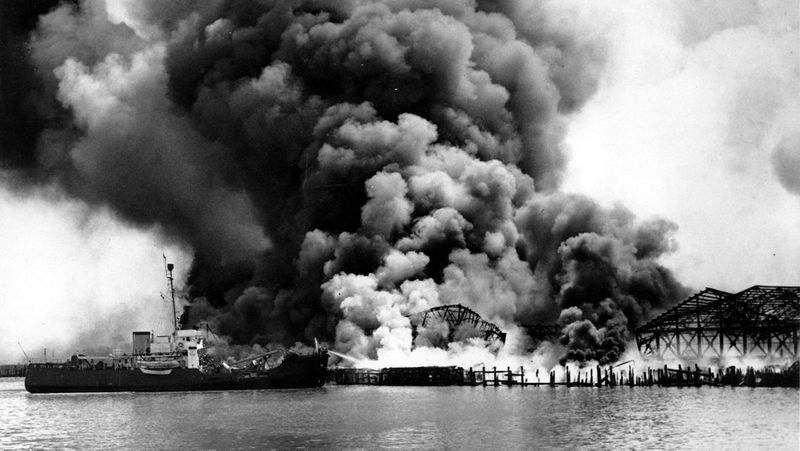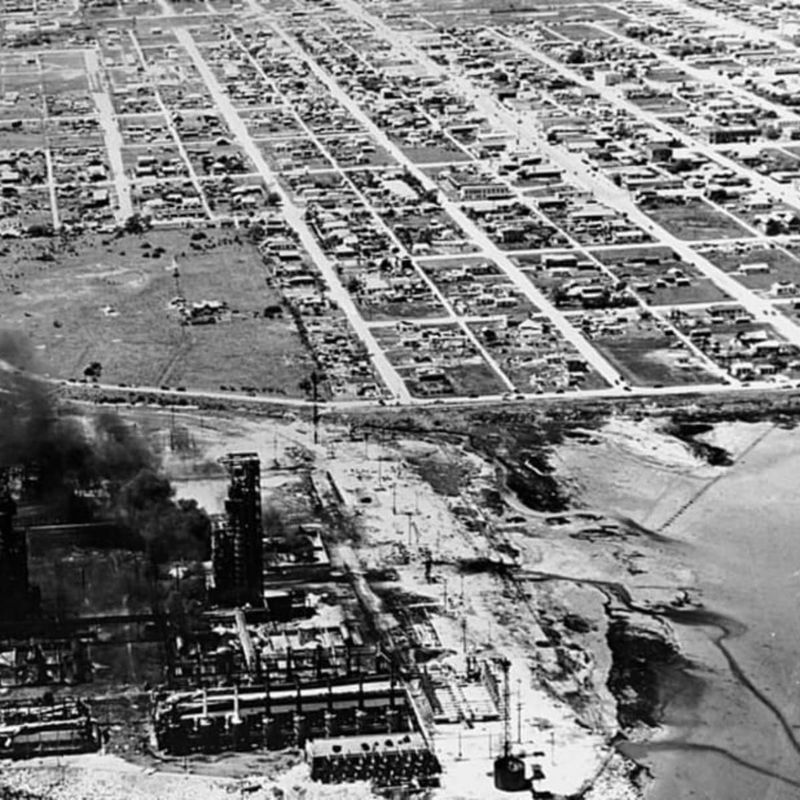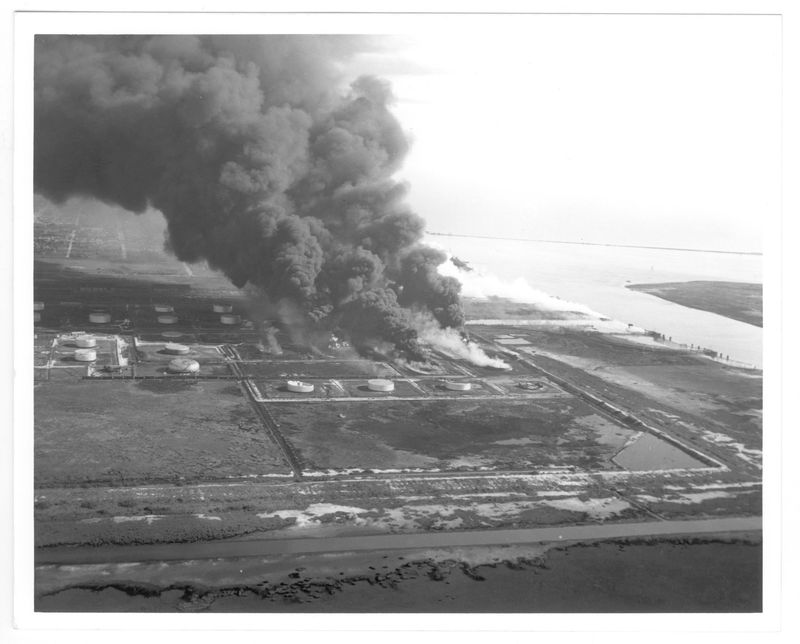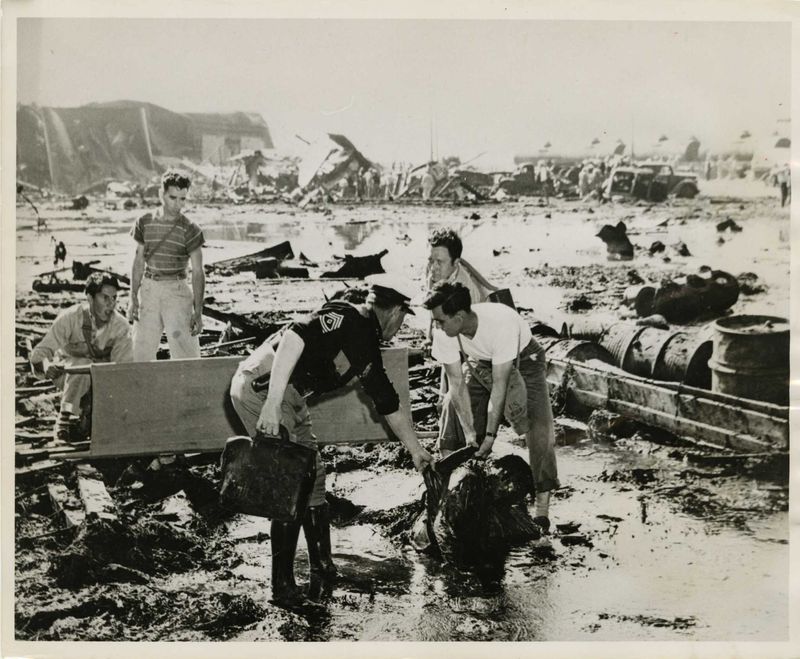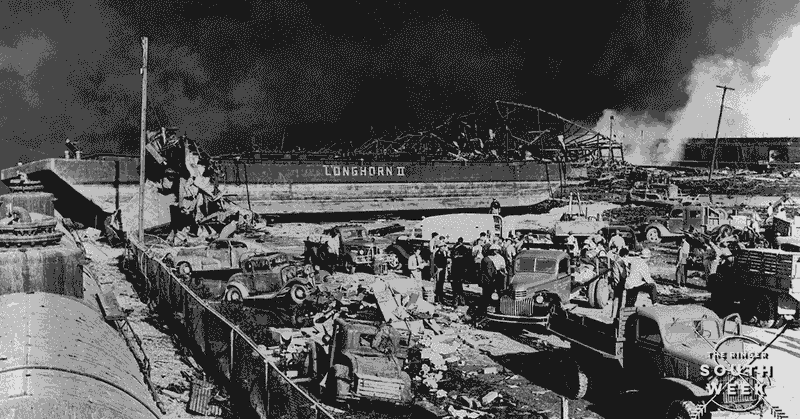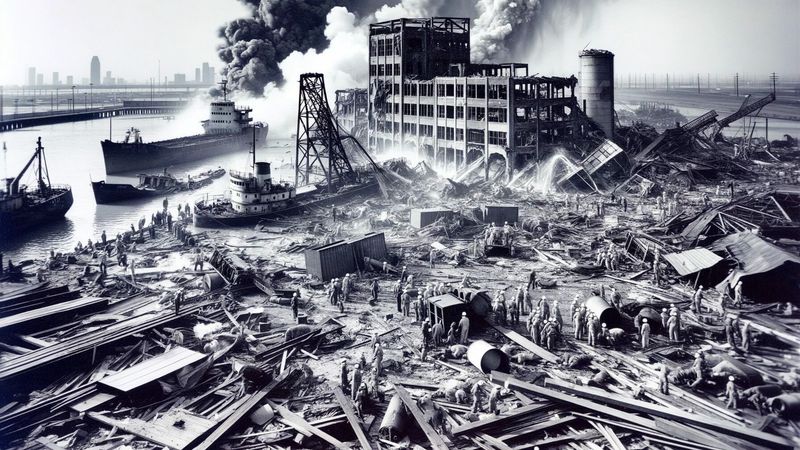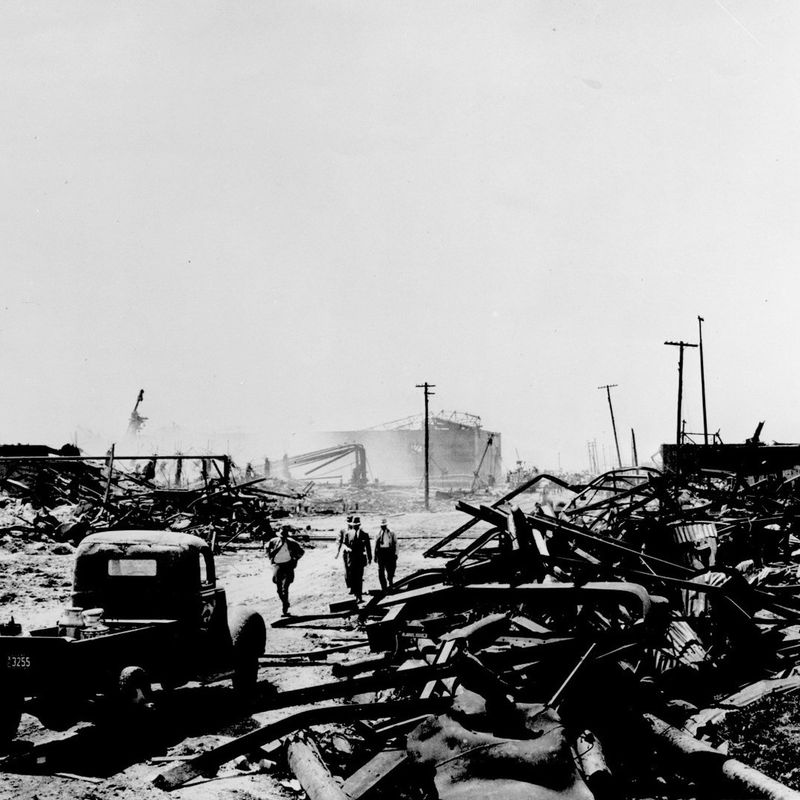On April 16, 1947, the sleepy port town of Texas City transformed into a hellscape in mere seconds. What began as a small fire aboard a cargo ship escalated into one of America’s deadliest industrial accidents, claiming hundreds of lives and reshaping how we handle hazardous materials. The devastation was so complete that many survivors said it looked like a war zone, with buildings flattened and fires raging for days.
1. Fire Ignites on the SS Grandcamp
The catastrophe’s fuse was lit when smoke began curling from the hold of the French vessel SS Grandcamp early that April morning. Dockworkers spotted the wisps around 8:00 AM, not realizing they were witnessing the beginning of America’s worst industrial accident.
The ship carried over 2,300 tons of ammonium nitrate fertilizer—the same compound later used in the Oklahoma City bombing. Crew members, hoping to save the valuable cargo, made the fatal decision to close hatches and pump steam into the hold, inadvertently creating pressure-cooker conditions.
2. Fatal Firefighting Mistakes Sealed Their Fate
Responding firefighters arrived with little knowledge of what awaited them. Nobody warned them about the dangerous cargo, and standard firefighting procedures of the era proved catastrophically wrong for chemical fires.
The crew’s decision to seal the hatches and inject steam actually accelerated the chemical reaction inside. As temperatures climbed above 850°F, the ammonium nitrate underwent a deadly transformation.
Red-orange smoke billowed from the ship—a telltale warning sign for those who understood chemistry, but tragically misinterpreted by those on scene as a routine fire.
3. The Blast Rivaled a Nuclear Explosion
At precisely 9:12 AM, the Grandcamp detonated with apocalyptic force. The explosion generated energy equivalent to 2,000-3,000 tons of TNT—roughly one-sixth the power of the atomic bomb dropped on Hiroshima. Witnesses described a mushroom cloud towering above the devastation.
The blast hurled the ship’s 1.5-ton anchor nearly two miles across town. The explosion created a 15-foot tidal wave that swept inland, adding to the chaos.
People reported seeing the fireball from as far as 60 miles away, while the concussive force registered on seismographs in Denver, Colorado—over 900 miles distant.
4. Hundreds Perished in an Instant
The human toll was staggering and immediate. The official death count reached 581, though many historians believe the true number exceeded 600. Entire families vanished in the blink of an eye.
Among the victims were 27 of the 28 Texas City firefighters who responded to the initial call. Their fire trucks were found blocks away, twisted and mangled beyond recognition. The lone surviving firefighter had stayed behind at the station with an injured foot.
Many victims were never identified, their bodies obliterated by the blast or burned beyond recognition in the subsequent fires that raged throughout the city.
5. Thousands Suffered Life-Altering Injuries
Beyond the immediate fatalities, over 5,000 people sustained injuries ranging from lacerations to severe burns and traumatic amputations. Flying glass became deadly projectiles, and many survivors were left permanently disfigured or disabled.
Local hospitals were quickly overwhelmed. School gymnasiums and community centers transformed into makeshift medical facilities. Doctors performed emergency surgeries on cafeteria tables, often without anesthesia.
The psychological trauma proved equally devastating. Survivors reported recurring nightmares and what we now recognize as PTSD symptoms for decades afterward, though mental health support was virtually non-existent in 1947.
6. The Blast Wave Traveled Astonishing Distances
The explosive force generated shockwaves that radiated outward with incredible power. Windows shattered in Houston, nearly 40 miles away, raining glass onto startled pedestrians who had no idea what had happened.
Residents of Louisiana, over 100 miles distant, reported hearing the explosion. Many initially believed it was a sonic boom or military test gone wrong.
The blast knocked people off their feet ten miles from the epicenter. One survivor recalled being lifted completely off the ground by the pressure wave while standing over a mile away from the harbor, describing it as “being hit by an invisible wall.”
7. A Second Ship Multiplied the Horror
Just when survivors thought the nightmare couldn’t worsen, it did. The SS High Flyer, another vessel loaded with ammonium nitrate and sulfur, had been damaged by the initial blast and caught fire. Despite desperate attempts to move it away from the burning harbor, the ship remained stuck.
For sixteen agonizing hours, the High Flyer smoldered while evacuation efforts continued. Then, at 1:10 AM on April 17, it exploded with nearly the same force as the Grandcamp.
This second explosion destroyed much of what had survived the first blast, including emergency equipment brought in for rescue operations. Miraculously, the death toll was lower as most people had evacuated the area.
8. Neighborhoods Vanished Without a Trace
Entire residential blocks simply ceased to exist after the explosions. The nearby Monsanto chemical plant, employing over 600 workers, was reduced to twisted metal skeletons. Not a single building within the plant remained standing.
Aerial photographs taken afterward resembled war zones, with a mile-wide radius of complete destruction. Homes were reduced to foundations, and personal belongings were found scattered up to 10 miles away.
The explosion’s force was so great that it created a 15-foot-deep, 300-foot-wide crater where the Grandcamp had been docked. Neighborhoods closest to the harbor were simply erased from existence, with nothing left to rebuild.
9. Chain Reactions Created an Inferno
The initial blast triggered a terrifying domino effect throughout Texas City’s industrial corridor. The Monsanto chemical plant erupted moments after the Grandcamp explosion, releasing toxic chemicals and further fueling the inferno.
Nearby oil storage tanks, some containing millions of gallons of fuel, were punctured by flying debris. Their contents ignited, sending pillars of flame hundreds of feet into the air. Two sightseeing airplanes flying over the disaster area nearly crashed when engulfed by smoke plumes.
Railroad cars loaded with chemicals derailed and exploded for hours afterward. Firefighters from surrounding communities who rushed to help found themselves battling not one fire but dozens scattered across miles.
10. Victims Came From All Walks of Life
The disaster claimed lives indiscriminately across age groups and professions. Among the dead were curious schoolchildren who had gathered to watch firefighters battle the ship blaze. When the explosion occurred, many were instantly killed where they stood.
Entire families perished together—parents at work in the industrial facilities while children attended nearby schools. Monsanto Chemical Company lost 234 employees in a single moment.
Particularly heartbreaking were the deaths of the volunteer firefighters, many of whom left behind young families. Their sacrifice led to the creation of the Texas City Firefighters Memorial, which stands today as a solemn reminder of their bravery in the face of overwhelming danger.
11. The Ship’s Anchor Became a Grim Monument
The Grandcamp’s massive anchor, weighing nearly 3,000 pounds, was hurled through the air like a toy. It traveled almost two miles before crashing to earth near the Pan American refinery, leaving a deep gouge in the ground.
Today, this anchor stands as a memorial to the disaster, placed upright in a special park dedicated to the victims. Visitors are often stunned by its size and the incredible force required to propel such a massive object so far.
Less known is that smaller pieces of the ship were found up to five miles away. Twisted metal from the Grandcamp’s hull was discovered embedded in buildings throughout Texas City, silent testimony to the explosion’s incredible power.
12. David vs. Goliath: The Historic Lawsuit
The disaster sparked unprecedented legal action. Survivors and victims’ families filed the first major class-action lawsuit against the U.S. government, arguing that negligence by federal regulators had allowed dangerous fertilizer to be shipped without proper warnings.
Attorney Russel Markwell represented 8,485 plaintiffs—a legal undertaking never before attempted on such scale. The case, Dalehite v. United States, reached the Supreme Court, which ruled 4-3 against the victims in a controversial decision.
Congress ultimately intervened, passing special legislation that provided $17 million in compensation to survivors—approximately $196 million in today’s dollars. This case established important precedents for governmental liability that continue to influence disaster response policy.
13. The City Rose From Its Ashes
The resilience of Texas City’s residents became legendary in the disaster’s aftermath. Within days, temporary housing appeared for thousands left homeless. Within weeks, cleanup crews had cleared enough debris to begin rebuilding.
Monsanto Chemical Company rebuilt its destroyed facility in just 134 days—a feat considered impossible by many experts. The company retained all employees on full salary during reconstruction, providing crucial economic stability.
By 1950, much of the city had been rebuilt, often stronger than before. Modern Texas City bears few visible scars from the catastrophe, though memorials and historical markers ensure the tragedy isn’t forgotten. The population, which dipped after the disaster, has since grown to over 50,000 residents.
14. Safety Regulations Born From Tragedy
The catastrophic failure of existing safety protocols prompted sweeping reforms. Chemical manufacturers faced strict new requirements for storing and transporting hazardous materials. The Coast Guard implemented rigorous inspection regimes for all vessels carrying dangerous cargo.
Fire departments nationwide revised their training to include chemical firefighting techniques. Texas City’s disaster directly influenced the creation of OSHA decades later.
Perhaps most significantly, ammonium nitrate—the explosion’s cause—became subject to special handling requirements. Modern fertilizer plants must follow stringent storage guidelines, maintain separation distances from populated areas, and use specific construction methods designed to direct potential explosions upward rather than outward.
15. Forgotten by History Books
Despite being America’s deadliest industrial accident, the Texas City Disaster remains largely absent from history textbooks. The tragedy occurred during post-WWII reconstruction and the early Cold War, when national attention focused on nuclear threats rather than industrial safety.
Local residents have worked tirelessly to preserve the memory through the Texas City Museum, which houses artifacts and personal accounts from survivors. Annual memorial services still draw hundreds on the disaster’s anniversary.
Historical recognition has improved somewhat in recent decades. The Texas Historical Commission erected markers at key sites, and several documentaries have brought renewed attention to this overlooked chapter of American history that forever changed how we handle industrial chemicals.
16. The Disaster’s Legacy Lives On
The Texas City catastrophe continues to influence emergency response planning today. Modern first responders study the disaster as a case example of how seemingly routine emergencies can escalate rapidly. The National Fire Protection Association cites it when teaching about the dangers of unknown cargo.
Family legacies remain deeply intertwined with the tragedy. Many current Texas City residents are descendants of survivors or victims, with stories passed through generations.
Perhaps most poignantly, the disaster forever changed how Americans view industrial facilities in their communities. The modern environmental movement, citizen oversight committees, and “right-to-know” laws about chemical hazards can all trace part of their DNA back to that fateful April morning in 1947.
